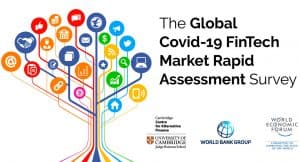I first began doing analysis on cybersecurity 5 years in the past. And yearly since, I’ve turn out to be an increasing number of satisfied a few easy truth:
With out satisfactory cybersecurity, our world is doomed.
Give it some thought: Our world is rapidly turning into solely digital and web linked.
Almost 90% of enterprise property are already digital. And now, with the Covid-19 pandemic accelerating the following section of transformation, companies can be shifting every little thing on-line.
Tack on the billions upon billions of {dollars} pouring into the Web of Issues (IoT) and every little thing will ultimately be linked to the web — and, subsequently, every little thing can be susceptible to assault.
Energy grids, banks, hospitals, automobiles, airplanes, communication networks… you title it.
Even our personal authorities will get it:
The White Home pegged cybersecurity as “one of the vital severe financial and nationwide safety challenges we face as a nation.”
Certainly!
The rationale we discover ourselves on this place is easy: Because the Digital Age has unfolded, and because the want for defense has elevated, the world has tragically underinvested in cybersecurity.
And therein lies the chance…
Going Fishing
For years, worldwide spending on cybersecurity has totaled lower than 1% of world gross home product (GDP).
As compared, navy spending as a share of GDP has routinely averaged shut to three% to 4% per yr.
However what poses the better menace to our world at present: a navy assault or a cyber-attack?
No-brainer: a cyber-attack. Particularly now…
Analysis agency Centrify believes the transition to distant work has elevated the probability of cyberbreaches dramatically. E mail is the commonest mode of assault. Microsoft (MSFT) alone thwarts billions of phishing makes an attempt yearly on Workplace365.
And but, because the finish of February, there’s been a 667% improve in spearfishing e mail assaults associated to Covid-19.
Add all of it up, and we’re coping with an unprecedented problem…
However that’s precisely why cybersecurity represents an unprecedented funding alternative.
Observe the “Good Cash” into this Development
The motion of the “sensible cash” — in different phrases, the enterprise capital companies that spend money on the largest rising tendencies — proves it.
In 2018, whole enterprise funding for cybersecurity companies topped $5 billion, up greater than 20% from the earlier yr.
The actions of firms and governments show it, too.
Over the previous few years, cybersecurity spending has been one of many fastest-growing areas of know-how.
Take into account:
- In 2004, international cybersecurity spending checked-in at $3.5 billion.
- By 2017, it elevated by roughly 35x to $120 billion.
And Cybersecurity Ventures predicts that, over the five-year interval from 2017 to 2021, cumulative international spending will exceed $1 trillion.

Eternally Catching Up
However right here’s the sobering actuality:
We’re not even spending sufficient to meet up with the issue, not to mention get forward of it.
You see, the rising quantity of information being saved means the variety of digital property that should be protected retains increasing.
Actually, our “at all times on” society creates an astonishing 2.5 quintillion (one adopted by 18 zeros) bytes of latest information on daily basis.
It may be laborious to know the enormity of that determine.
To assist, although, take into consideration every byte of information as a landmass. The extra bytes we produce, the bigger the general landmass will get. And each inch of it must be defended towards assault.
Lengthy story quick: the cyberattack “floor space” is rising at a dizzying tempo.

If cybersecurity spending elevated on the identical price as information growth, we’d be speaking a few $2.6 trillion trade.
But even essentially the most bullish estimates solely name for spending to hit a pair hundred billion in 2020.
As one trade insider confessed, “We are able to’t rent our approach out of the issue. There aren’t sufficient sources and the price is just too excessive.”
Add all of it up, and the stage is ready for cybersecurity budgets to blow up as each firm, company, and authorities tries to beef up its defenses to keep away from being a sufferer — or worse, the enabler of a nationwide tragedy due to insufficient safeguards.
I estimate that the highest safety distributors ought to simply have the ability to maintain 20% to 25% income progress over the following 5 to 10 years.
By comparability, the common S&P 500 firm is growing gross sales by solely about 5.4% proper now.
In opposition to such a backdrop, I can’t envision a extra compelling funding pattern.
Actually, that is fairly presumably the “Development Commerce of the Decade.”
However simply because the pattern is so apparent doesn’t imply the earnings will come simple…
No Silver Bullet
“Whereas the cyber-security trade is poised to create some large winners, it’s vital to notice that there’ll by no means be an ideal resolution. No firm can hope to fully wipe out all cybercrime. The most effective one can do is to attempt to keep on par with, or a bit forward of, the hackers. As such, one of the best corporations received’t construct merchandise for a cut-off date however will give attention to steady innovation.”
So stated Glenn Solomon, managing companion at GGV Capital, a number of years in the past.
And his evaluation rings more true than ever at present. He’s not alone on this evaluation, both.
Bessemer Enterprise Companions’ David Cowan, whose agency created the broadly adopted BVP Cyber Index, says, “Any mature cybersecurity product is an out of date cybersecurity product.”
That’s as a result of, with a mature product, hackers would have had time to isolate its vulnerabilities.
Consequently, there’s no umbrella resolution…
And there’s no single, slam-dunk firm we are able to spend money on to simply revenue from the growth. There’s merely an excessive amount of aggressive threat concerned.
So how will we greatest place ourselves to revenue?
On this case, right here’s what makes essentially the most sense:
Spend money on an exchange-traded fund that focuses on cybersecurity.
Listed here are 4 choices so that you can assessment and select from:
- ETFMG Prime Cyber Safety ETF (HACK)
- First Belief NASDAQ Cybersecurity ETF (CIBR)
- iShares Cybersecurity and Tech ETF (IHAK)
- World X Cybersecurity ETF (BUG)
These ETFs give us publicity to dozens of cutting-edge cybersecurity companies…
With a single funding, at a low value!
Forward of the tape,

Lou Basenese
Feedback




 Jeff Lynn: When the enormity of Covid-19 hit in mid-March, we did see an preliminary lower within the variety of entrepreneurs going ahead with their campaigns, and in flip funding ranges went down an excellent bit. However, as everybody settled into the brand new momentary actuality, we noticed a pointy uptick again to regular ranges within the following weeks.
Jeff Lynn: When the enormity of Covid-19 hit in mid-March, we did see an preliminary lower within the variety of entrepreneurs going ahead with their campaigns, and in flip funding ranges went down an excellent bit. However, as everybody settled into the brand new momentary actuality, we noticed a pointy uptick again to regular ranges within the following weeks. This interview is a part of an ongoing sequence wanting on the evolution of the Fintech trade with specific reference to the altering panorama in mild of Covid-19.
This interview is a part of an ongoing sequence wanting on the evolution of the Fintech trade with specific reference to the altering panorama in mild of Covid-19.